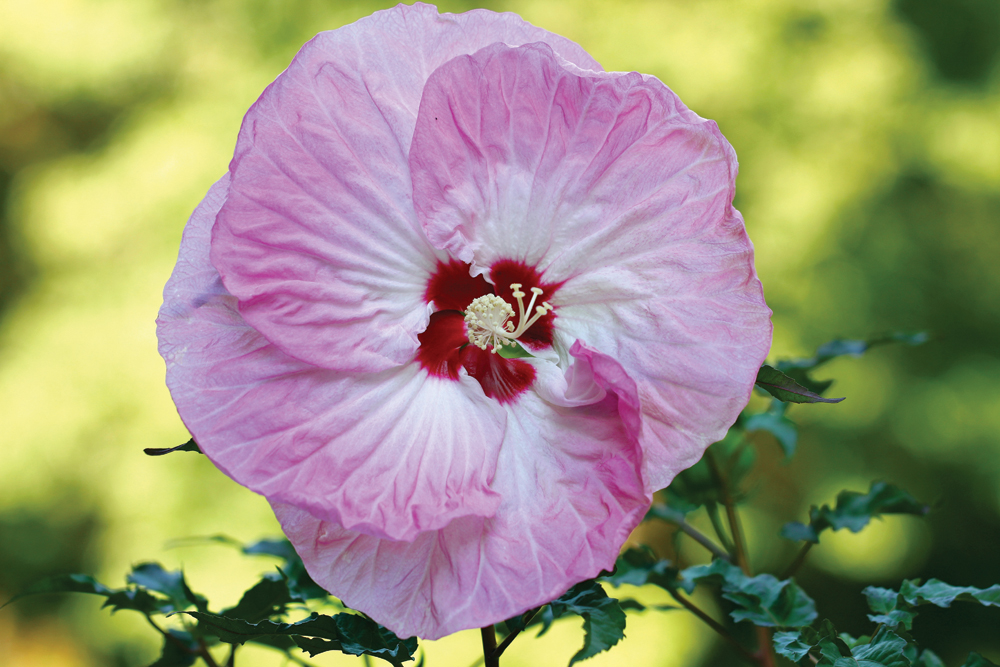
An example of a hardy hibiscus. Photo by iStock.com/DipaliS
BY MOYA ANDREWS
At this time of year, in some local gardens, you may notice and admire large blooms in pink, white, and maroon that lend a tropical feel to the landscape. Although they are hibiscus flowers, they are not the tropical varieties that grow so well in places such as Hawaii.
The tropical varieties, e.g. Hibiscus rosa-sinensis, which have countless cultivars, will not over-winter outdoors in our climate and have to be taken indoors in a pot before a hard freeze. The hardy hibiscus that are perennial in our local gardens and bloom in late summer into fall belong to a genus which contains over 200 species and are the temperate-zone relatives of the tropical varieties.
All hibiscus flowers are born singly or in terminal spikes and have a characteristic funnel-shaped flower (like that of the related Rose of Sharon) with five overlapping petals and a central column of joined stamens. Some have deeper-colored markings in their throats, and all have toothed or lobed leaves. They self-seed easily in our Midwest gardens and form shrubs appropriate for growing in U.S. Department of Agriculture hardiness zones 5 through 9.
The tallest is Hibiscus moscheutos, sometimes called the common rose mallow or swamp rose mallow, which can grow as tall as 8 feet, as wide as 5 feet, and produces single hollyhock-type flowers. However, to suit small gardens, the hybridizers have been busy in recent years producing a number of much shorter, shrubby cultivars that still produce big dramatic blooms. The best known is the short ‘Southern Belle’ with 10-inch-wide, deep-pink blossoms.
Hardy hibiscus are easy to grow and prefer sun and well-drained soil. Water regularly and feed during the flowering period. Propagate from seed (the easiest but not the only method) and check for aphids, mealy bugs, and whiteflies. They do not work well as a cut flower but do create a dramatic focal point in the flower garden. If Bambi is a frequent visitor to your yard, spray the buds with repellent, but only during the flowering period.







